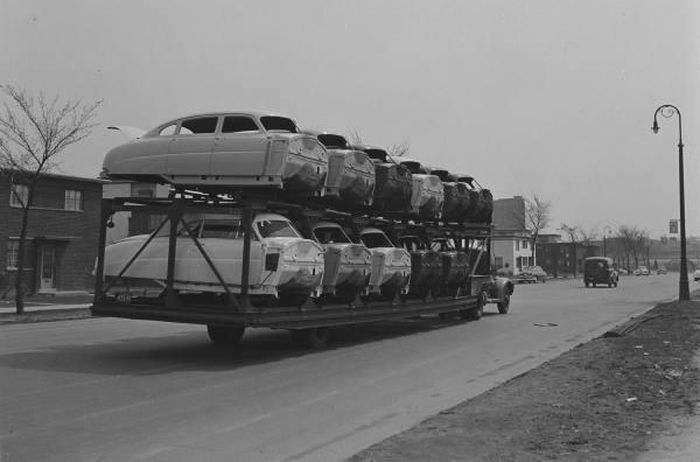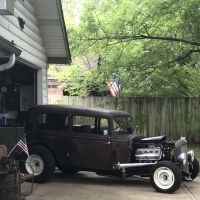Convertibles
Comments
-
From the 30's onward, convertibles were simply standard coupes with their tops sawed off (and other changes made as well, like beefed-up frames). But it was coupes that were modified, not broughams. Broughams were 2-door sedans, using the standard 4-door bodies but with 2 doors. There WAS a "convertible brougham" but it was simply a standard coupe with folding top, whose cabin was lengthened by cutting out part of the rear deck, in order to make room for a rear seat. This began with the 1937 model year.
Later on in the 40's, standard steel-top "coupes" all had space for rear seats, so the convertible versions no longer required body modification to provide space for a rear seat.0 -
The step downs had to be a planned venture because the double rocker panel bracing had to be done before all the other body panels were installed. I'm sure prior to the Hollywood they used coupes, but in 51 they probably used a Hollywood for the convertible.
0 -
"Correct me if I am wrong. Were not all Hudson convertibles simply broughams pulled of the line and modified into convertibles and not made as common production cars on the line??. "
As far as Step-Downs are concerned, the answer is, "Sort of." The very first few convertibles were indeed, converted coupes, i.e., top was sawn off, header and back deck re-worked and some stiffeners were added. The added pieces varied a little as if some experimentation was in order. Obviously, re-worked panels on the earliest convertibles were a little cruder than a dedicated stamped piece would be.
Once the initial learning curve was completed, new dies were made for the convertible header, back deck and well wall. Additionally, a 'Z'-brace was installed inside of the outer perimeter frame to reduce the flex (front to rear) found in a typical convertible.
It is my contention that initially, convertibles were made on the line, with the rest of the bodies at the body plant, down the road from the Main Plant. At least in so much as creating the basic shell, i.e., frame, body components. Then the doors and trunk lid were fitted and attached to the car. After the initial shell was welded together, it remained on the line long enough for the body in white to receive primer and paint in the paint booth.
The painted shell was then moved from the line and into the Convertible Room, where the next phase was completed by hand, one car at a time, although, probably the room was large enough to outfit at least several convertibles. What was done here was the rest of the convertible-specific items, like the top mechanism, pump, switch, hydraulic lines, windows, including windshields, the top wiring harness, at least some of the interior, but probably not the front seat. The convertible top was also attached. This would be the logical place to test the top mechanism, do all of the adjustments (which are many) and adjust the side windows.
After this phase, the body was loaded onto a body trailer along with other closed body shells and trucked down to the Main Plant. Here, the convertible body would return to the line to be outfitted with running gear, suspension, wiring harness, doghouse, exterior trim and the remaining interior items (like front seat, carpet maybe), wheels and tires.
Many years ago now, Life Magazine released some Hudson related pictures that answered so many of these questions. Note convertible on bottom row at the rear of the trailer.
This has all been gone over before, but some of the newer forum members might not be familiar with it. 0
0 -
Cool picture and interesting history.0
Categories
- 36.9K All Categories
- 112 Hudson 1916 - 1929
- 20 Upcoming Events
- 92 Essex Super 6
- 28.6K HUDSON
- 571 "How To" - Skills, mechanical and other wise
- 995 Street Rods
- 151 American Motors
- 178 The Flathead Forum
- 49 Manuals, etc,.
- 78 Hudson 8
- 44 FORUM - Instructions and Tips on using the forum
- 2.8K CLASSIFIEDS
- 608 Vehicles
- 2.1K Parts & Pieces
- 77 Literature & Memorabilia
- Hudson 1916 - 1929 Yahoo Groups Archived Photos

